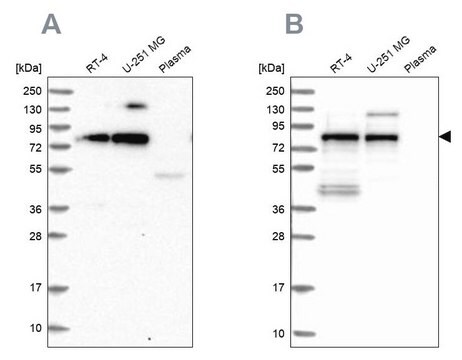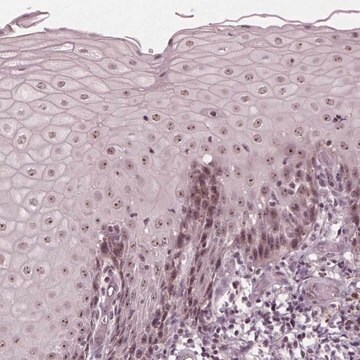MAB1285
Anti-HLA-B27,Cln HLA-ABC-m3 (mouse monoclonal)
clone HLA-ABC-m3, Chemicon®, from mouse
Synonym(s):
Anti-AS, Anti-B-4901, Anti-HLAB
About This Item
Recommended Products
biological source
mouse
Quality Level
antibody form
purified antibody
antibody product type
primary antibodies
clone
HLA-ABC-m3, monoclonal
species reactivity
human
manufacturer/tradename
Chemicon®
technique(s)
flow cytometry: suitable
immunocytochemistry: suitable
isotype
IgG2a
NCBI accession no.
UniProt accession no.
shipped in
wet ice
target post-translational modification
unmodified
Gene Information
human ... HLA-B(3106)
Related Categories
General description
Specificity
(9.5x107M-1).
Cell reactivity:
Flow cytometric analysis of lymphocyte staining for HLA-B27 gave the following results:
Subjects Fluorescence Intensity
Heterozygous HLA-B27+ Strong
Homozygous HLA-B7+ Strong
Heterozygous HLA-B7+ Faint
Non B27, Non B7 Negative
application
SUGGESTED USAGE DILUTION
1. Flow cytometry and indirect immunofluorescence 1:60 to 1:120
Dilute with isotonic buffer. Use 50 μl of diluted antibody per 1 x 10E6 peripheral blood mononuclear cells (PBMC) in 100 μl buffer.
2. Cytotoxicity testing 1:25.
Physical form
Storage and Stability
WARNING: The monoclonal reagent solution contains 0.1% sodium azide as a preservative. Due to potential hazards arising from the build up of this material in pipes, spent reagent should be disposed of with liberal volumes of water.
Other Notes
Legal Information
Not finding the right product?
Try our Product Selector Tool.
Storage Class
12 - Non Combustible Liquids
wgk_germany
WGK 2
flash_point_f
Not applicable
flash_point_c
Not applicable
Certificates of Analysis (COA)
Search for Certificates of Analysis (COA) by entering the products Lot/Batch Number. Lot and Batch Numbers can be found on a product’s label following the words ‘Lot’ or ‘Batch’.
Already Own This Product?
Find documentation for the products that you have recently purchased in the Document Library.
Our team of scientists has experience in all areas of research including Life Science, Material Science, Chemical Synthesis, Chromatography, Analytical and many others.
Contact Technical Service







